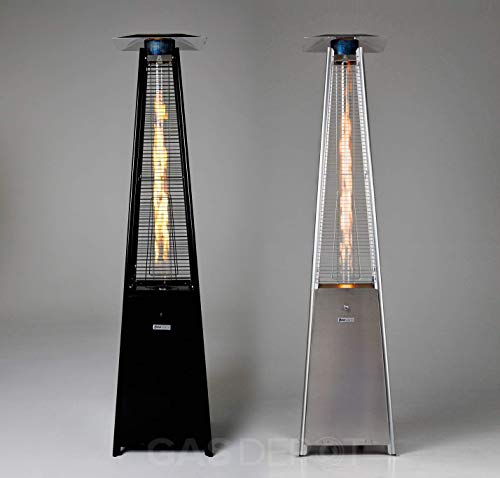Patio Heating Equipment: A Comprehensive Guide
As outdoor living areas continue to gain appeal, the desire for convenience and enjoyment throughout cooler months has actually risen. To produce a year-round patio experience, investing in the best heating equipment is important. This post will check out different types of patio heating equipment, their benefits and disadvantages, installation considerations, and typically asked concerns regarding patio heating.
Types of Patio Heating Equipment
When selecting patio heating equipment, it's important to comprehend the various options offered. Below is a comprehensive contrast of the most popular kinds of patio heaters:
| Type of Heater | Description | Advantages | Disadvantages |
|---|---|---|---|
| Gas Patio Heaters | These are usually high, freestanding units powered by propane or gas. | - Provides a significant quantity of heat - Portable (propane units) - Quick to heat up | - Requires gas lines or propane tanks - Can be pricey to operate - Safety issues if not utilized effectively |
| Electric Patio Heaters | These can be ceiling-mounted, wall-mounted, or portable units powered by electrical power. | - Easy to set up and use - Quiet operation - No need for gas lines | - Limited heating range - Requires an electric outlet - Higher operating expenses if utilized extensively |
| Infrared Patio Heaters | Infrared heaters release infrared radiation, warming things more than the air. | - Instant heat - Efficient and eco-friendly - Can be set up in numerous setups | - Affects just the location within line of sight - May not be as efficient in windy conditions |
| Fire Pits and Fireplaces | Wood-burning or gas-powered features creating a cozy environment. | - Natural ambiance and heat - Often multifunctional (cooking options) - Social gathering centerpiece | - Requires more upkeep - Risk of open flames - May have local regulations |
| Portable Patio Heaters | Smaller, movable systems developed for easy transportation. | - Versatile and adaptable to different settings - Many options offered - Easy storage | - Limited heating area - May not be as effective as larger units |
Key Considerations for Patio Heating Equipment
Picking the ideal kind of patio heating equipment depends upon numerous elements. Here are some crucial considerations:
- Size of the Patio: Larger spaces might require more than one heating system or a more powerful heater to guarantee efficient heat distribution.
- Area: Consider where your heater will remain in relation to wind, shade, and potential blockages that may block heat.
- Type of Gathering: The kind of activity you plan on will influence your choice. For casual socializing, a fire pit might be ideal, while a more formal dining setup might benefit from a gas or electric heater.
- Safety Regulations: Check local policies concerning outdoor heating equipment to make sure compliance and security.
- Fuel Source: Determine if you choose electrical energy, propane, natural gas, or wood. Each has its benefits and drawbacks relating to cost, convenience, and accessibility.
Setup Tips
- For gas patio heaters, engaging a professional for setup is highly suggested to guarantee security.
- Electrical units typically need a certified electrical contractor for setup, especially for long-term components.
- Portable heaters offer versatility, however guarantee they are put on stable ground and away from combustible materials.
Popular Brands and Models
Numerous brands have actually developed themselves as leading manufacturers of patio heating equipment. Here are some extremely related to options:
- Mr. Heater: Known for its big selection of propane heaters perfect for various outdoor settings.
- Fire Sense: Offers a wide range of stylish and functional electrical and gas patio heaters.
- Cuisinart: Famous for its outdoor cooking equipment, they also supply portable heating solutions.
- AZ Patio Heaters: Features a selection of stylish gas patio heaters that mix well with modern outdoor aesthetics.
Frequently Asked Questions (FAQs)
1. How much heat does a patio heater provide?Patio heaters normally range from 30,000 to 50,000 BTUs( British Thermal Units), supplying enough warmth for areas of as much as 200 square feet, depending on the design and type of heater. 2. Are patio heaters safe to use during windy conditions?While numerous heaters
are designed to hold up against some wind, high winds can reduce efficiency and safety. It's advisable to keep an eye on wind conditions and use heaters designed for outdoor usage. 3. Can I leave my patio heater outside during winter?Many patio heaters are developed to withstand outdoor conditions, but it's sensible to save them in a shed or garage throughout severe
weather or winter season months to prolong their life expectancy. 4. Just how much does patio heating equipment cost?Prices differ commonly based upon the type and design, varying from ₤ 100 for basic portable heaters to ₤ 1,500 or more for high-end commercial-grade options. 5. Do patio heaters need
maintenance? fireplacesandstoves.uk consists of checking gas connections for leakages(for gas heaters), cleaning elements for electric models, and guaranteeing all mechanical parts are in great working order. Investing in patio heating equipment can
considerably improve outdoor convenience and extend the use of patio spaces. Understanding the numerous options, factors to consider, and best practices for installation and maintenance can result in notified
decisions that align with private needs and preferences. With the best heater, outdoor gatherings can stay satisfying, warm, and welcoming through the chill of the chillier months, guaranteeing that the patio is not just a summer season retreat but a year-round sanctuary.

